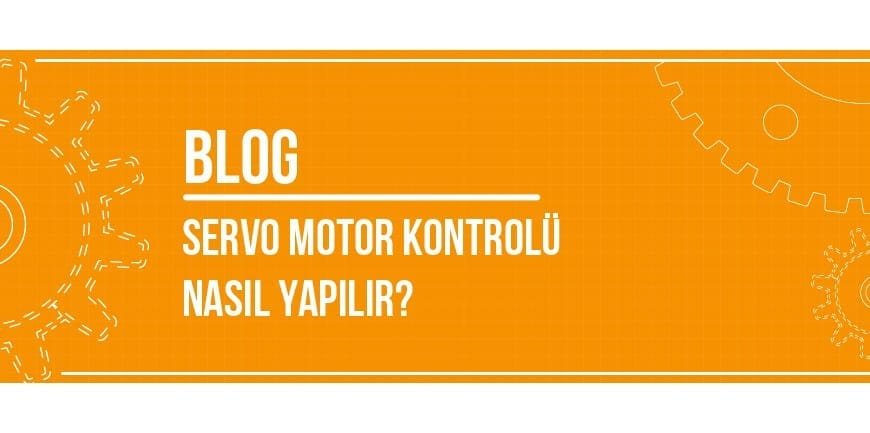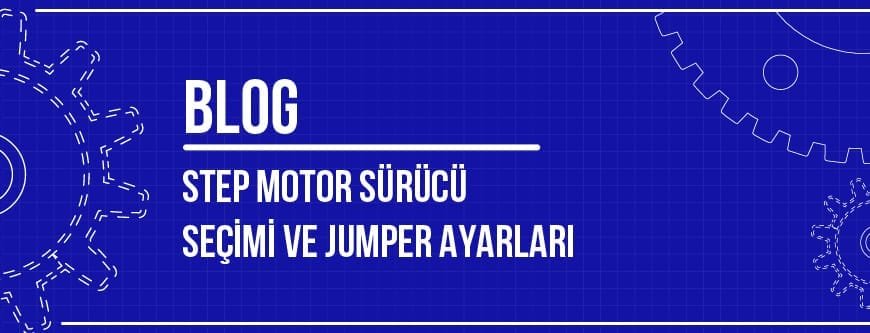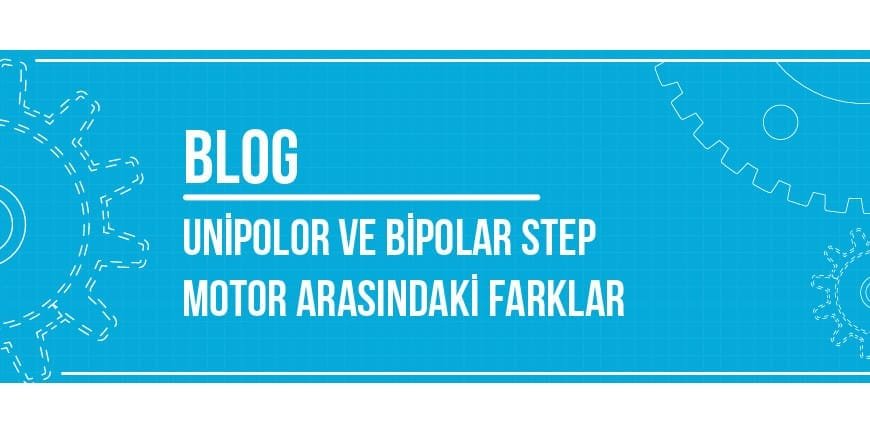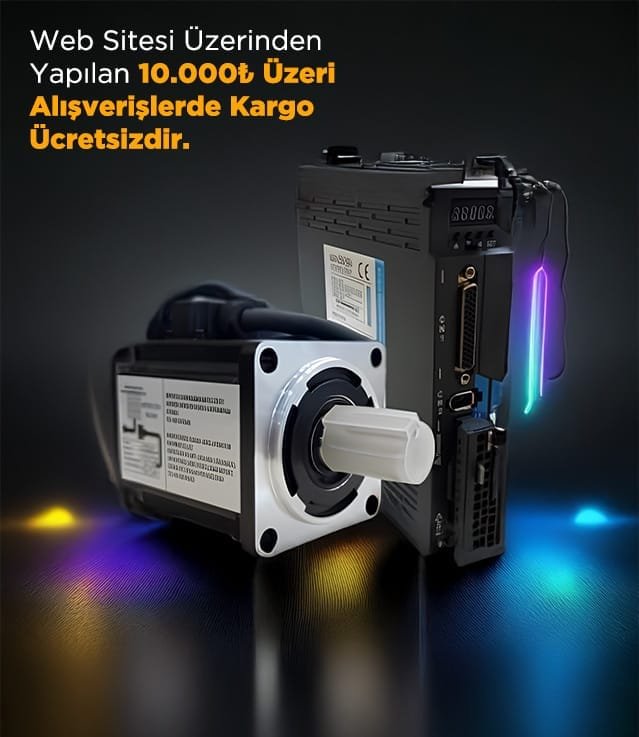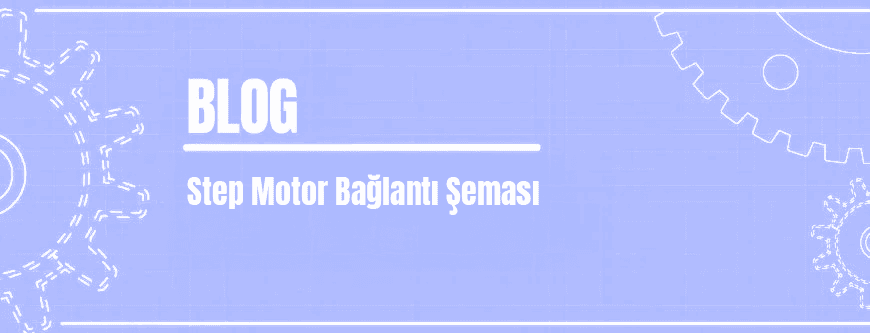
İçindekiler
Stepper Motor Connection Diagram
The stepper motor connection diagram is critical for the motor to work properly with the driver circuit. An incorrect connection can cause the motor to vibrate, rotate inefficiently, or be completely damaged. Therefore, it is essential to know the cable outputs, colors, and correct pins on the driver for the stepper motor. Especially in systems such as industrial automation, CNC machines, and 3D printers, the correct application of the connection diagram directly affects motor performance.
Although the connection diagrams of stepper motors vary depending on the manufacturer, the basic logic is the same. The coils must be correctly matched and connected in accordance with the operating principle of the motor driver. Therefore, reviewing the diagram and consulting the motor’s technical documentation before implementation will ensure trouble-free use in the long term.
How to Make a Stepper Motor Connection Diagram?
The question “How to Make a Stepper Motor Connection Diagram?” is one of the most frequently asked questions, especially in CNC machines, 3D printers, and automation systems. To ensure the stepper motor operates correctly, it must be connected properly to the driver. First, it is important to know how many wires the motor has. Four-wire stepper motors have only two coils, making the connection quite simple. Six-wire and eight-wire stepper motors, on the other hand, offer different speed and torque values thanks to serial or parallel connection options.
The first step in connecting is to correctly identify the coil terminals. The most commonly used method for this is to measure the resistance with a multimeter. When the two terminals belonging to the same coil are measured with a multimeter, they show resistance. When coil pairs are found in this way, they must be connected correctly to the A-A’ and B-B’ inputs of the driver. If the cables are incorrectly matched, the motor will either not rotate at all or vibrate. Additionally, the driver’s voltage and current values must be adjusted to match the motor’s technical specifications. Incorrect values can damage both the driver and the stepper motor.
When the connection diagram is done right, the stepper motor works smoothly and efficiently. For long-term use, it’s important to solder the cables securely, make sure the connection points don’t come loose, and keep the cable layout clean to prevent interference. This way, you get the most out of the system and the motor lasts a long time.
Stepper Motor Cable Colors
Stepper motor cable colors may vary depending on the motor type and manufacturer. Although most manufacturers use standard color codes, sometimes there may be different combinations of the same colors. Therefore, it is extremely important to identify the coil terminals with a multimeter before making the connection. Cable colors usually indicate coil pairs, and when these pairs are connected correctly, the motor will run smoothly.
For example, 4-wire stepper motors typically have red-blue and green-black coil pairs. However, these colors may vary between different brands. Therefore, rather than relying solely on color codes, the safest method is to measure the resistance to confirm which wires belong to the same coil.
How to Connect a 4-Wire Stepper Motor?
4-wire stepper motors are one of the simplest types of motors in terms of connection. These motors have two coils, each with two cable outputs. After identifying the coil terminals with a multimeter, the first coil is connected to the A and A’ outputs of the driver, and the second coil is connected to the B and B’ outputs.
Connection is generally easier in this type of motor because there is no center tap. However, if the cables are mismatched, the motor will either not turn at all or will run with vibration. When connected correctly, the motor will run with high efficiency and provide more stable step movements.
How to Connect a 6-Wire Stepper Motor?
6-wire stepper motors allow for both series and unipolar connections. These motors have an additional output from the center of each coil. This allows the motor to be driven in different connection configurations. Depending on user requirements, it is possible to achieve higher torque or higher speed.
When connecting this type of motor, you must first decide which mode it will be used in. If the middle terminals are left open, the motor can be operated in bipolar mode. If the middle terminals are connected appropriately to the driver, it can be used in unipolar mode. Both connection types have advantages, and the choice should be made based on the application.
How to Connect an 8-Wire Stepper Motor?
8-wire stepper motors are the most flexible motor type in terms of connection options. In these motors, each coil is split into two. Users can connect the coils in series, in parallel, or use a single coil, as desired. This allows for adaptation to different voltage and current values.
When connected in series, higher torque is achieved, while parallel connection provides higher speed advantage. This motor type is preferred especially in CNC machines and industrial applications. When connected correctly, 8-wire stepper motors offer high performance and flexibility.
Stepper Motor Series Connection
The series connection method for stepper motors is generally preferred in situations where high torque is required. Connecting the coils in series creates a stronger magnetic field, allowing the motor to take more powerful steps. However, this connection type results in slightly lower speeds because resistance increases as current passes through the coils.
Series connection is ideal for transporting heavy loads, CNC machine axis movements, and applications requiring high force at low speeds. With the correct driver settings, the series connection method ensures long-lasting and efficient operation.
Stepper Motor Parallel Connection
The parallel connection method is used to achieve higher speeds in 6- or 8-wire stepper motors. In this connection, the coils are connected in parallel to reduce the total resistance of the motor. This allows the motor to draw more current and operate more stably at high speeds.
Parallel connections are generally preferred in 3D printers, robot systems that perform rapid positioning, and applications that require high speeds. Although torque is slightly reduced in this type of connection, it is widely used in many modern automation systems due to its speed advantage.
Learning the basics of stepper motor connection diagrams is essential for proper installation and efficient use. However, since each project may have different requirements, selecting the right motor is just as critical as the connection itself. You can contact us to purchase stepper motors and receive technical support, and take advantage of our professional solutions.
Diğer Blog Yazılarımız



